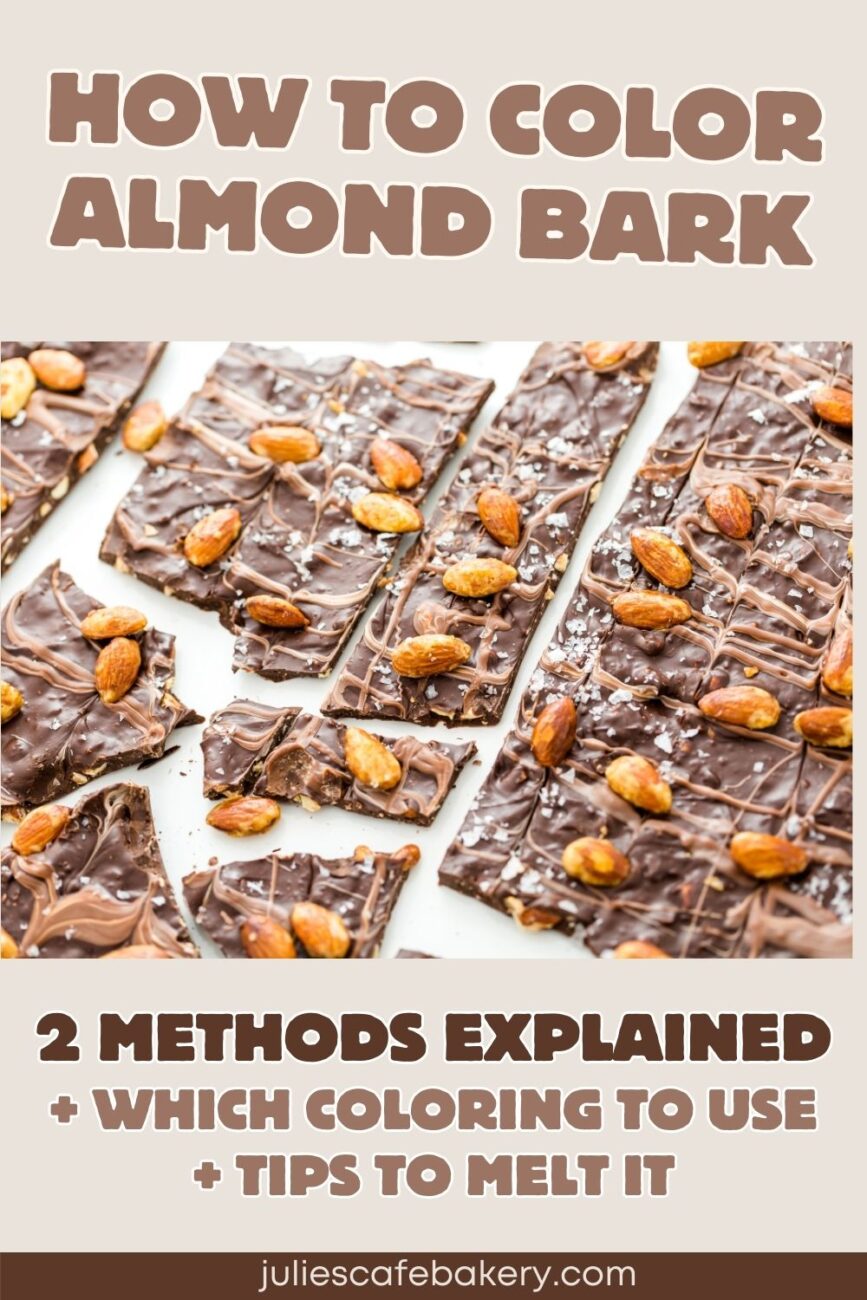Here’s How To Color Almond Bark

Almond Bark is the ideal confectionery if you are craving something sweet or if you want to make your sweet masterpieces colorful. You can buy it in blocks, packages, or round discs in candy and baking supply stores. If you choose to use it for decorating, you may want to know how to color it.
You can color Almond Bark by melting it in either a double-boiler or microwave then adding the coloring and flavorings you want. The important thing is to avoid liquid food colors. Thanks to Almond Bark’s white color, the coloring spreads evenly and it can be easily dyed in any color you want.
In the rest of the article, I’ll share some more detailed tips on how to color Almond Bark and achieve a smooth consistency.
How do you color Almond Bark?
You can color Almond Bark after melting it. This can be done in two ways:
Using a microwave
Choose your favorite food coloring. Unwrap the block of Almond Bark, cut it into pieces, and place then in a microwave-safe bowl. As you can guess, the process looks like you are melting chocolate.
Microwave the Almond Bark for 30 seconds on low heat. Take it out and stir the bark. A silicone spoon would be perfect for this purpose because melted Almond Bark doesn’t stick to it, but you can do it with any kind of spoon.
Repeat the process in 30-second intervals until the Almond Bark is fully melted and smooth. You can now add food coloring. Since the Almond Bark is white, you can easily achieve a homogenous color. You just need to stir the melted bark until the coloring is spread evenly.
Using the double-boiler method
The double boiler consists of two pots. The first pot needs to be filled with water to the half and then placed on a medium-low heat stove. The second pot is empty, and it goes on top of the first pot. This is where you add your Almond Bark. Stir the bark continuously until it melts completely.
Keep in mind that Almond Barks can burn more quickly and should be constantly stirred during this process.
Remove the top pan from the stove and quickly stir in the coloring before it starts to harden.

What kind of coloring should you use in Almond Bark?
Almond Bark can react to liquids and hence clumps them into an unworkable paste. Water or liquids can also seize the Almond Bark, turning it grainy and hard. That’s because water changes the chemical structure into something quite unpleasant.
So, you should use powder, paste, or oil-based coloring as it doesn’t change the consistency of melted Almond Bark. Also, choose food coloring specifically made to color Almond Barks or candy melts.
What do you cover with Almond Bark?
You can cover strawberries, fruits, and nuts with melted Almond Bark.
You can also use Almond Bark as a dipping sauce for cookies, candies, cake balls, apple slices, crackers, pretzel sticks, and snack mix pieces. Almond Barks melt very quickly and will harden smoothly to cover these foods.
Can you use Almond Bark instead of candy melts?
You can use Almond Barks instead of candy melts since their ingredient lists are very similar. In addition, white Almond Bark comes in vanilla flavor, just like candy melts do. So it’s not surprising that the Almond Barks will taste the same as the candy melts.
What is similar to Almond Bark?
Almond Bark is similar to white chocolate chips, plain white chocolate candy bars, coating chocolate, confectionery coating, and melting wafers. They are all used for coating, dipping, and molding.
Tips to get smooth melted colored Almond Bark
You can heat the coloring first to ensure it’s at the same temperature as the melted Almond Bark to blend easily.
Add the coloring gradually and mix thoroughly before adding more color to avoid it getting lumpy.
It’s vital to note that Almond Bark tends to harden quickly after being melted, and hence you should add the color immediately after it’s melted.
If you add too much coloring, simply add more white Almond Barks to achieve the suitable intensity or brightness you desire.
